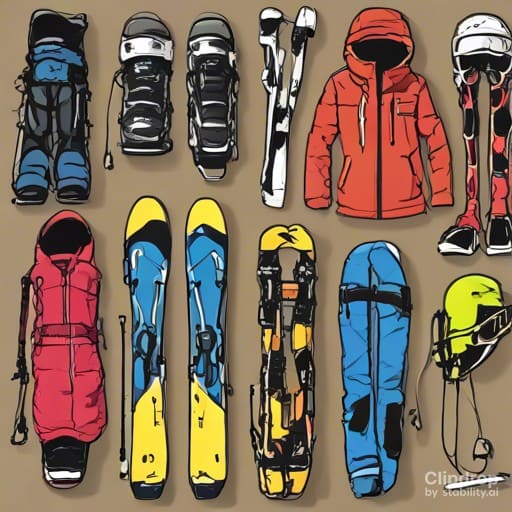Ski equipment as we choose it

The choice of backcountry skiing equipment depends on many factors, including experience level, skiing style, weather conditions and individual preferences. The process of buying alpine ski equipment can vary in difficulty depending on your level of experience, knowledge and preferences.
It is important to remember that choosing a ski suit and boots is a very individual process. It is a good idea to try several options to make sure they fit you perfectly and offer you comfort and safety while skiing.
When you choose and want to buy skis, a ski suit, separate ski pants and ski boots, there are several important factors to consider.
Below we have described the main aspects to consider when choosing ski equipment for the mountain.
How to choose ski equipment TOP 5 recommendations
We choose clothes and clothing according to needs
Size and fit for ski clothing
It is important to choose a ski suit and boots that fit your body and legs correctly. The suit should not be too tight or too loose, and the boots should offer support and comfort.
Materials suitable for ski clothing and footwear
Ski suits and boots are often made of waterproof and breathable materials, which provide comfort and protection against cold and wet conditions. Check if the materials are of high quality and suitable for the conditions in which you intend to ski.
Make sure you have clothes suitable for the weather conditions, including a waterproof and warm suit. Use protective ski equipment, such as a helmet and goggles, for your safety.
Safety and quality of ski equipment
Insulation for
An optimal ski suit should have good insulation to retain body heat in cold conditions. The suit must provide warmth and at the same time allow the body to breathe.
Ski equipment functionality
When choosing a suit and boots, you should look for functional details such as vents for temperature regulation, pockets for storing important items and protection from snow.
Leading brand in the quality of alpine ski equipment and sports
Style and design
Your ski suit and boots should also be stylish and match your design preferences. Choose the color and style you like.
Selection by brand and brand
Find out the reputation of ski suit and boot manufacturers to choose proven and reliable brands.
Buy the right skis
The ski length
The length of skis is very important. Beginners may benefit from buying shorter skis because they are easier to handle. More advanced skiers or those who prefer speed may choose longer skis.
Flexibility of Skis
Skis with greater flexibility are easier to control, being suitable for beginners. Skis with less flexibility are more stable and are preferred by advanced skiers.
Ski style
There are specialized skis for different styles of skiing, such as downhill skiing, off-piste skiing (freeride) or touring skiing.
Essential ski equipment and footwear
Bindings (Fixations)
Choose bindings (fastenings) suitable for your skill level and your weight. Fitting and adjusting the bindings correctly is essential for your safety.
Boots
Choose comfortable and well-fitting boots, because they are essential for ski control. There are specialized boots for on-piste and off-piste skiing.
Poles (Ski Poles)
Ski poles should be the right length for your height and have comfortable handles. For on-piste skiing you can buy lightweight skis, but for off-piste skiing you need stronger skis.
.jpg)
Before buy the ski equipment, you can ask for the advice of specialists or a ski instructor to make sure that you choose the equipment according to your level of experience and your skiing style.
It is always recommended to consult a specialist or a ski instructor to get personalized advice according to your specific needs.
In general, buying ski equipment can be a pleasant and interesting experience, especially if you get advice from professionals and if you do your homework before making purchases. Trying on ski equipment and seeking expert advice can help you make informed decisions and find the right equipment for your specific needs.



